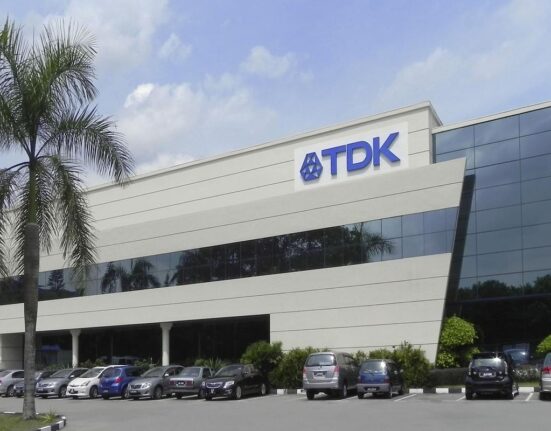Preparing the right way for retirement can help you avoid mistakes that could derail your plan. The whole process can be overwhelming, but it’s better to work things out in advance rather than to be surprised later. If you’re a decade away from retirement, take these three steps now to help make sure that you’re on course — or to give yourself time to make some adjustments if you’re not.
1. Start mapping out your expected retirement budget
Chances are, numerous aspects of your financial plan will change over the next decade. Forecasting is an inexact art, and because one must accept a margin of error, some people can be skeptical about the value of the process. Don’t fall into that line of thinking. Arm yourself with data, build a tentative plan, and periodically review that plan to assess any relevant changes.

Image source: Getty Images.
A 10-year timeline is short enough to provide a good baseline for setting retirement goals and expectations. Most people’s basic needs are similar — and you should already have a handle on your monthly budget for food, transportation, clothing, and household basics. Those expenses shouldn’t change too much when you shift from working full time into retirement. Most people also have a general idea of their expected housing situations. Retired couples should estimate what their monthly rent or mortgage payment will be, accounting for property tax, insurance, HOA fees, and maintenance costs, if applicable.
The retirement budget variables that people often don’t pay enough attention to in advance usually relate to medical expenses and lifestyle goals. Most people incur the majority of their lifetime healthcare costs during their senior years, so it’s important to understand the potential medical bills that you could face in retirement. It’s also important to understand your potential Medicare benefits so you can estimate how much you’ll have to cover out-of-pocket or with private insurance.
Finally, your retirement budget should account for the lifestyle expenses you expect to incur for things such as leisure activities, hobbies, dining, and travel. Those could factor heavily into your annual budget, and your retirement-planning decisions should reflect your desires as much as your basic needs.
Once you’ve made a reasonable calculation about what your monthly expenses will average in retirement, you can figure out how much cash flow you’ll need to generate from your portfolio to ensure that income matches outflow. This will inform a number of important decisions, including the age at which you’ll stop working and when you choose to apply for your Social Security benefits.
2. Check your Social Security statement
Social Security is a cornerstone of most Americans’ retirement finances, but many people have only a vague idea how much income they can expect to receive from the program. If you’re unclear about how large your monthly checks are on track to be, then it’s time to gather that data.
Social Security benefits are calculated based on the amount that you pay into the system during your 35 highest-earning years (indexed for inflation) and the age at which you start taking benefits. The more you pay in wage taxes during those years, the larger your monthly benefits will be. If you take benefits prior to what the government considers your full retirement age (FRA), the program will reduce the size of your monthly checks — by up to 30%, if you file at the earliest possible point (when you turn 62). Conversely, you can increase your monthly benefits by electing to delay taking benefits past your FRA, up to age 70.
The Social Security Administration’s online portal, dubbed my Social Security, allows you to check your status and get estimates of what your monthly benefits will be, based on your work history and the age at which you plan to claim them. Once you’re armed with this information, you’ll have a good ballpark figure as to how much guaranteed monthly income you can expect from the program. If that amount falls short of your expected budget, you’ll know how much cash flow you’ll need to bring in from other sources.
3. Review the asset allocation in your retirement accounts
Everyone should regularly review their retirement accounts, and that becomes even more important as you get older. When you’re still a few decades away from retirement, your Individual Retirement Accounts (IRAs), 401(k)s, and other portfolios should be optimized for growth. Averaged over the long term, the stock market tends to generate reliable returns as the global economy grows. If you own a diversified enough group of stocks to hedge yourself against any company-specific risks, an equity portfolio should be the most efficient financial growth tool you can have.
Unfortunately, not every year is a good one in the stock market. Bear markets can quickly wipe out significant portions of your holdings. Historically, the U.S. market has always recovered from these down periods eventually, but it can take five, 10, or even 15 years for Wall Street to fully rebound from a market crash. If you have time to wait before you’ll need to tap your portfolio, that may not be as much of an issue for you. But if you’re planning to retire in a decade or less, then these considerations become highly relevant to your investing strategy.
Your time horizon shrinks as you get closer to retirement. Investors with shorter time horizons should shift their focus away from growth and toward volatility management. It’s important to reduce the impact that any crash could have on your portfolio when you’re closing in on retirement. Quite simply, if your assets are down when you need to sell some to cover living expenses, you’ll be locking in investment losses that you’ll never recover. It’s also important to recognize that your opportunity cost declines when you have fewer years for your returns to compound — in other words, it’s much more costly to miss out on 20 years of investment returns than it is to miss out on five years of gains.
For these reasons, financial planners recommend shifting your portfolio allocation as you approach retirement to a more conservative, cash-preserving strategy. If you’re 10 years away from leaving the workforce, you should have significant exposure to bonds across your investment accounts. You should still hold equities to deliver growth beyond your retirement date, but balancing your needs for growth and safety becomes an essential feature as you age.






